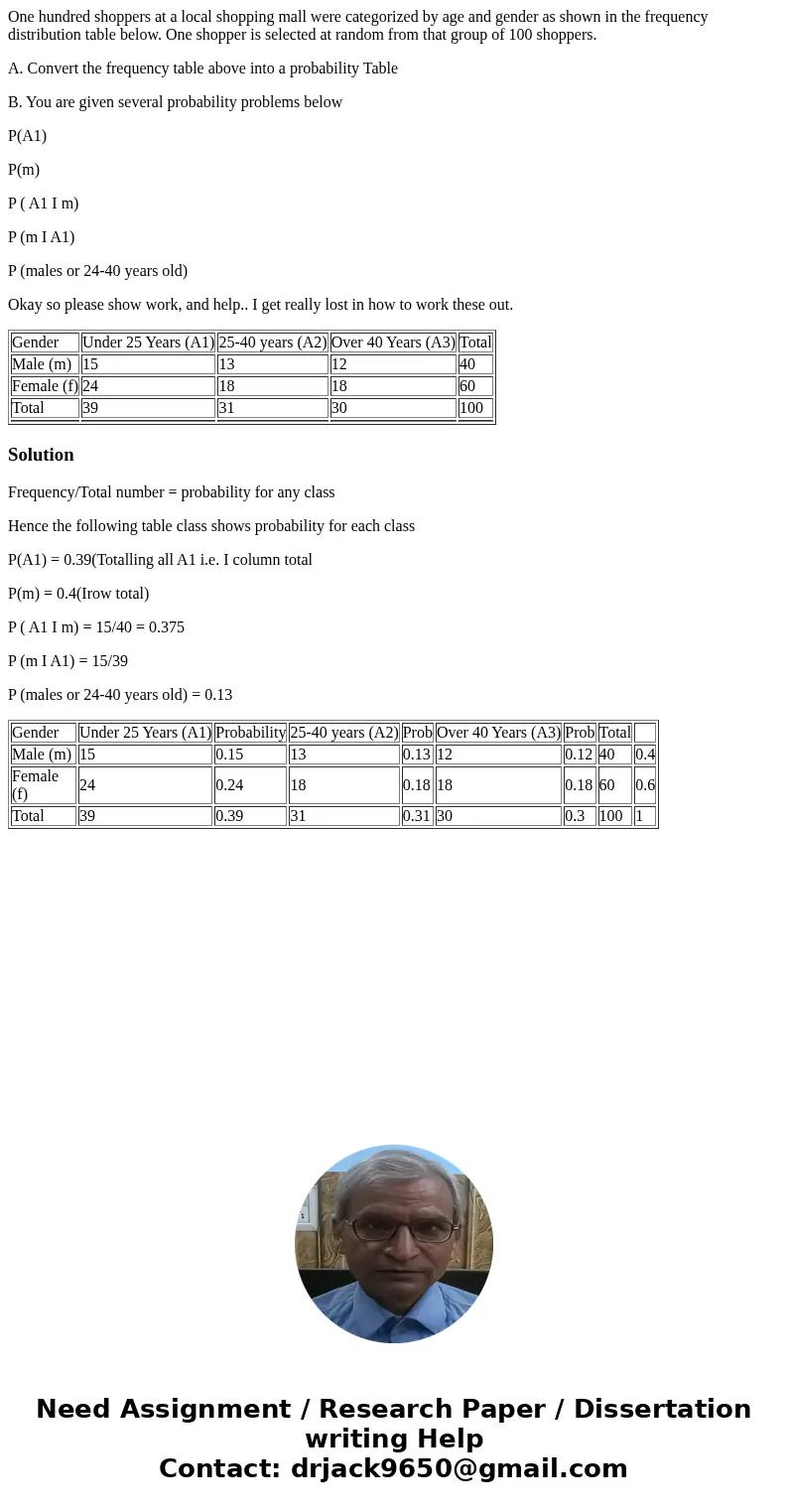One hundred shoppers at a local shopping mall were categoriz
One hundred shoppers at a local shopping mall were categorized by age and gender as shown in the frequency distribution table below. One shopper is selected at random from that group of 100 shoppers.
A. Convert the frequency table above into a probability Table
B. You are given several probability problems below
P(A1)
P(m)
P ( A1 I m)
P (m I A1)
P (males or 24-40 years old)
Okay so please show work, and help.. I get really lost in how to work these out.
| Gender | Under 25 Years (A1) | 25-40 years (A2) | Over 40 Years (A3) | Total |
| Male (m) | 15 | 13 | 12 | 40 |
| Female (f) | 24 | 18 | 18 | 60 |
| Total | 39 | 31 | 30 | 100 |
Solution
Frequency/Total number = probability for any class
Hence the following table class shows probability for each class
P(A1) = 0.39(Totalling all A1 i.e. I column total
P(m) = 0.4(Irow total)
P ( A1 I m) = 15/40 = 0.375
P (m I A1) = 15/39
P (males or 24-40 years old) = 0.13
| Gender | Under 25 Years (A1) | Probability | 25-40 years (A2) | Prob | Over 40 Years (A3) | Prob | Total | |
| Male (m) | 15 | 0.15 | 13 | 0.13 | 12 | 0.12 | 40 | 0.4 |
| Female (f) | 24 | 0.24 | 18 | 0.18 | 18 | 0.18 | 60 | 0.6 |
| Total | 39 | 0.39 | 31 | 0.31 | 30 | 0.3 | 100 | 1 |

 Homework Sourse
Homework Sourse